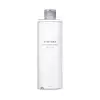What's inside
What's inside
 Key Ingredients
Key Ingredients

 Benefits
Benefits

 Concerns
Concerns

No concerns
 Ingredients Side-by-side
Ingredients Side-by-side

Water
Skin ConditioningPEG/PPG/Polybutylene Glycol-8/5/3 Glycerin
HumectantGlycerin
HumectantPropanediol
SolventPentylene Glycol
Skin ConditioningMethyl Gluceth-10
EmulsifyingCamellia Sinensis Seed Extract
HumectantHedera Helix Stem Extract
Ulmus Davidiana Root Extract
Skin ConditioningOryza Sativa Bran Extract
Skin ConditioningMalt Juice
Skin ConditioningPolyquaternium-51
Skin ConditioningSodium Hyaluronate
HumectantButylene Glycol
HumectantPEG-32
HumectantEthylhexylglycerin
Skin ConditioningCitric Acid
BufferingSodium Citrate
BufferingPhenoxyethanol
PreservativeWater, PEG/PPG/Polybutylene Glycol-8/5/3 Glycerin, Glycerin, Propanediol, Pentylene Glycol, Methyl Gluceth-10, Camellia Sinensis Seed Extract, Hedera Helix Stem Extract, Ulmus Davidiana Root Extract, Oryza Sativa Bran Extract, Malt Juice, Polyquaternium-51, Sodium Hyaluronate, Butylene Glycol, PEG-32, Ethylhexylglycerin, Citric Acid, Sodium Citrate, Phenoxyethanol
Water
Skin ConditioningDipropylene Glycol
HumectantButylene Glycol
HumectantBetaine
Humectant1,2-Hexanediol
Skin ConditioningNiacinamide
SmoothingPEG/PPG-17/6 Copolymer
SolventPanthenol
Skin ConditioningEthylhexylglycerin
Skin ConditioningAllantoin
Skin ConditioningOctyldodeceth-16
EmulsifyingChondrus Crispus Extract
Skin ConditioningCarbomer
Emulsion StabilisingSaccharum Officinarum Extract
MoisturisingTromethamine
BufferingXanthan Gum
EmulsifyingDisodium EDTA
Sodium Hyaluronate
HumectantHamamelis Virginiana Extract
AntiseborrhoeicPhenoxyethanol
PreservativeTocopherol
AntioxidantGlyceryl Glucoside
HumectantGlycerin
HumectantGlucose
HumectantWater, Dipropylene Glycol, Butylene Glycol, Betaine, 1,2-Hexanediol, Niacinamide, PEG/PPG-17/6 Copolymer, Panthenol, Ethylhexylglycerin, Allantoin, Octyldodeceth-16, Chondrus Crispus Extract, Carbomer, Saccharum Officinarum Extract, Tromethamine, Xanthan Gum, Disodium EDTA, Sodium Hyaluronate, Hamamelis Virginiana Extract, Phenoxyethanol, Tocopherol, Glyceryl Glucoside, Glycerin, Glucose
Ingredients Explained
These ingredients are found in both products.
Ingredients higher up in an ingredient list are typically present in a larger amount.
Butylene Glycol (or BG) is used within cosmetic products for a few different reasons:
Overall, Butylene Glycol is a safe and well-rounded ingredient that works well with other ingredients.
Though this ingredient works well with most skin types, some people with sensitive skin may experience a reaction such as allergic rashes, closed comedones, or itchiness.
Learn more about Butylene GlycolEthylhexylglycerin (we can't pronounce this either) is commonly used as a preservative and skin softener. It is derived from glyceryl.
You might see Ethylhexylglycerin often paired with other preservatives such as phenoxyethanol. Ethylhexylglycerin has been found to increase the effectiveness of these other preservatives.
Glycerin is already naturally found in your skin. It helps moisturize and protect your skin.
A study from 2016 found glycerin to be more effective as a humectant than AHAs and hyaluronic acid.
As a humectant, it helps the skin stay hydrated by pulling moisture to your skin. The low molecular weight of glycerin allows it to pull moisture into the deeper layers of your skin.
Hydrated skin improves your skin barrier; Your skin barrier helps protect against irritants and bacteria.
Glycerin has also been found to have antimicrobial and antiviral properties. Due to these properties, glycerin is often used in wound and burn treatments.
In cosmetics, glycerin is usually derived from plants such as soybean or palm. However, it can also be sourced from animals, such as tallow or animal fat.
This ingredient is organic, colorless, odorless, and non-toxic.
Glycerin is the name for this ingredient in American English. British English uses Glycerol/Glycerine.
Learn more about GlycerinPhenoxyethanol is a preservative that has germicide, antimicrobial, and aromatic properties. Studies show that phenoxyethanol can prevent microbial growth. By itself, it has a scent that is similar to that of a rose.
It's often used in formulations along with Caprylyl Glycol to preserve the shelf life of products.
Sodium Hyaluronate is hyaluronic acid's salt form. It is commonly derived from the sodium salt of hyaluronic acid.
Like hyaluronic acid, it is great at holding water and acts as a humectant. This makes it a great skin hydrating ingredient.
Sodium Hyaluronate is naturally occurring in our bodies and is mostly found in eye fluid and joints.
These are some other common types of Hyaluronic Acid:
Learn more about Sodium HyaluronateWater. It's the most common cosmetic ingredient of all. You'll usually see it at the top of ingredient lists, meaning that it makes up the largest part of the product.
So why is it so popular? Water most often acts as a solvent - this means that it helps dissolve other ingredients into the formulation.
You'll also recognize water as that liquid we all need to stay alive. If you see this, drink a glass of water. Stay hydrated!
Learn more about Water